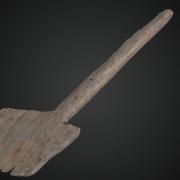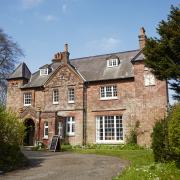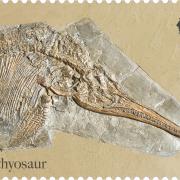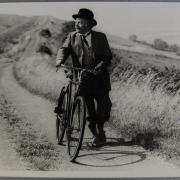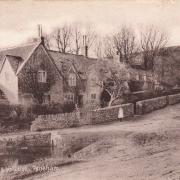Driving to lunch with old friends near Sturminster Newton we took a detour to visit Holnest church. I knew the chances would be slim of finding any trace of what was once the county's most bizarre folly, the Byzantine mausoleum built in the churchyard by John Drax in the mid-19th century. A long dry spell occasionally reveals its ghostly footprint in the grass, but the weather this summer proved too fickle for it to be visible.
John Samuel Wanley Sawbridge Erle Drax (1800-1887) – to give him his full name – was a mixture of mad, monster, and megalomaniac. To John Drax we owe the brick wall and three-mile section of the A31 that borders Charborough Park. Drax acquired Charborough on his marriage to an only Erle Drax daughter, adding her surname to his own and becoming one of Dorset’s wealthiest landowners, partly due to the revenues from the family’s plantations in Barbados, created on the back of the slave trade. The new turnpike road was deliberately routed to replace one much closer to his mansion. It proved an expensive white elephant, nearly bankrupting the estate. Shortly after its completion in 1843 the first railway line opened in the county, making the turnpike and its tolls obsolete overnight. Not content with a wall, Drax built its two entrance gates into the park, the Lion Gate and Stag Gate (whose five-legged stag has recently been restored). He also added a further 40 feet to the five storey Charborough Tower, in need of rebuilding after being struck by lightning, at 120 feet still a familiar south Dorset landmark.
Drax's wealth gave him power but not popularity, and the cash to indulge his appetite for folly building. As an employer he was feared. Anyone not doing exactly what Drax had ordered was threatened with a whipping. When out in his gig he was accompanied by a small lad, his 'tiger', whose sole task was to open and close gates. Neighbouring landowners thought him arrogant and quarrelsome. There were battles over land, hunting rights, even wagers in which he was accused of cheating. In one instance he deliberately demolished a bridge to block a right of way. As an MP for Wareham, nicknamed the Silent Member, his only speech was a request for a window to be shut. And there were rumours of his buying of votes. His one weakness was the dark, of which he was terrified. He slept by day and at night a watchman circled the house, calling out 'All's Well' as he did so.
After the death of his wife Drax bought the 3,000 Holnest estate, where in due course he placed statues of various 'feminine deities, some very eccentric' along the drive. He also had 40-foot-high stone column erected similar to Nelson's in Trafalgar Square, complete with lions at its feet, and topped by a larger-than-life nine-foot bronze statue of himself in frock coat and silk hat. A second bronze statue of Drax on a horse, intended to rival those of Wellington and Napoleon, was hauled on waggons by teams of horses to a second mansion Drax owned in Kent.
However, nothing can compete with the barrel-vaulted Byzantine-style mausoleum Drax had built in Holnest churchyard some 30 years before his death. Once finished it boasted marble pillars, a bronze door, a dozen stained glass windows, and a mosaic of a scantily clad lady draped in coloured gauze perched on top of a cloud. In Highways and Byways in Dorset (1906) Frederick Treves likened it to a 'pumping station'. Drax was to be its sole occupant and laid to rest in a bronze sarcophagus which stood in its centre on a raised dais. He even rehearsed his own funeral, cursing at every jolt as his long-suffering servants carried him into the mausoleum in an oak lead-line coffin, which he then sent back to its makers in Sherborne saying it was too narrow.
John Drax died a day short of his 87th birthday. Vindictive to the last, a clause in his will promised that 'there will be a sovereign for everyone who attends my funeral'. You can imagine the response when those who went were told they already had a sovereign, namely Queen Victoria. Even though his will stipulated that a copy of The Times be delivered daily to the mausoleum after his death, nothing could halt its gradual decay, and the building was finally demolished in 1935. The resulting rubble was sold for a shilling a ton to anyone willing to haul it away. My favourite obituary of Drax, chosen by the aptly named Leslie Coffin, was in his Dorset Villages (Past & Present), a wonderful but chaotic book about Holnest: 'Those whom the Gods wish to destroy they first make mad'.




